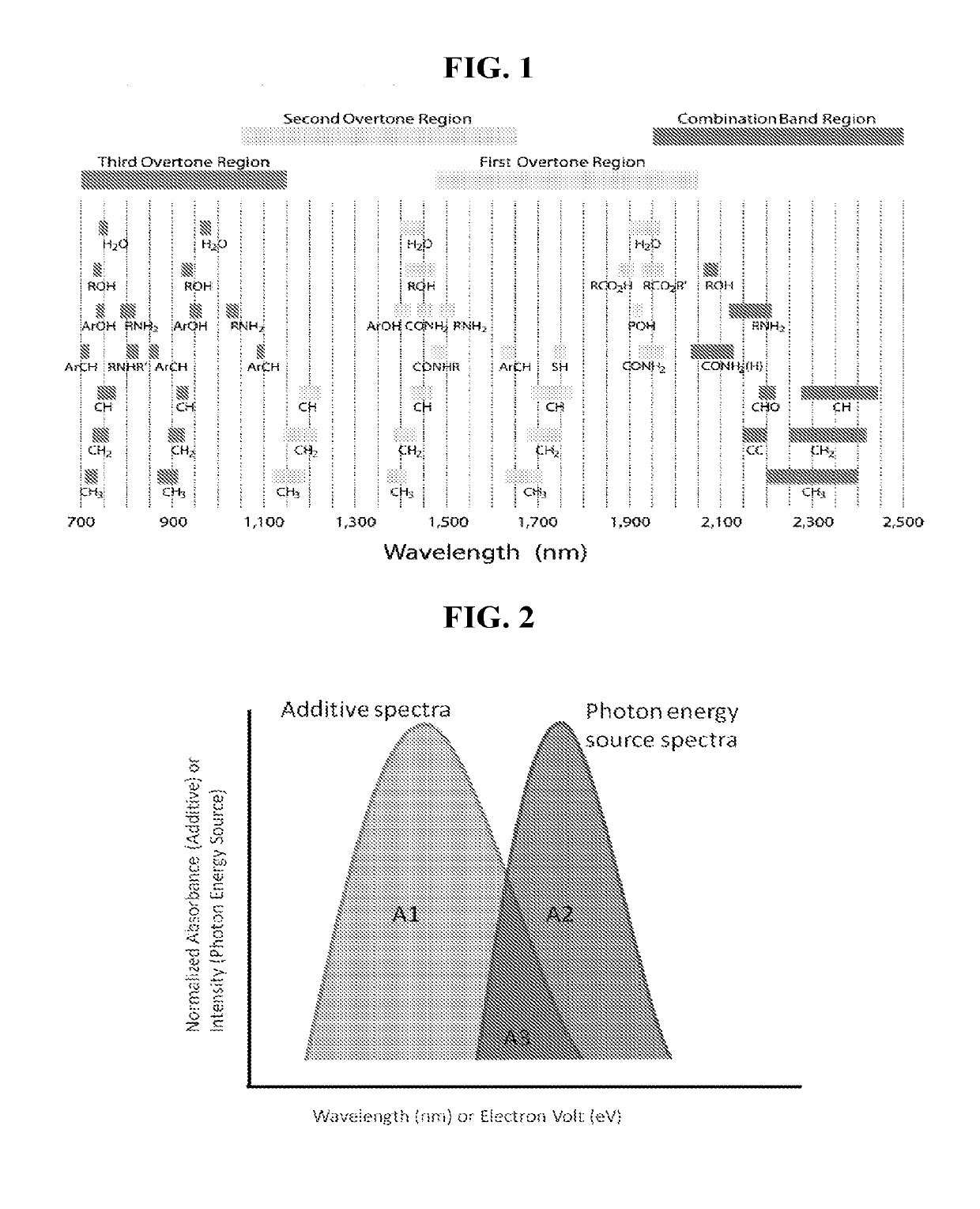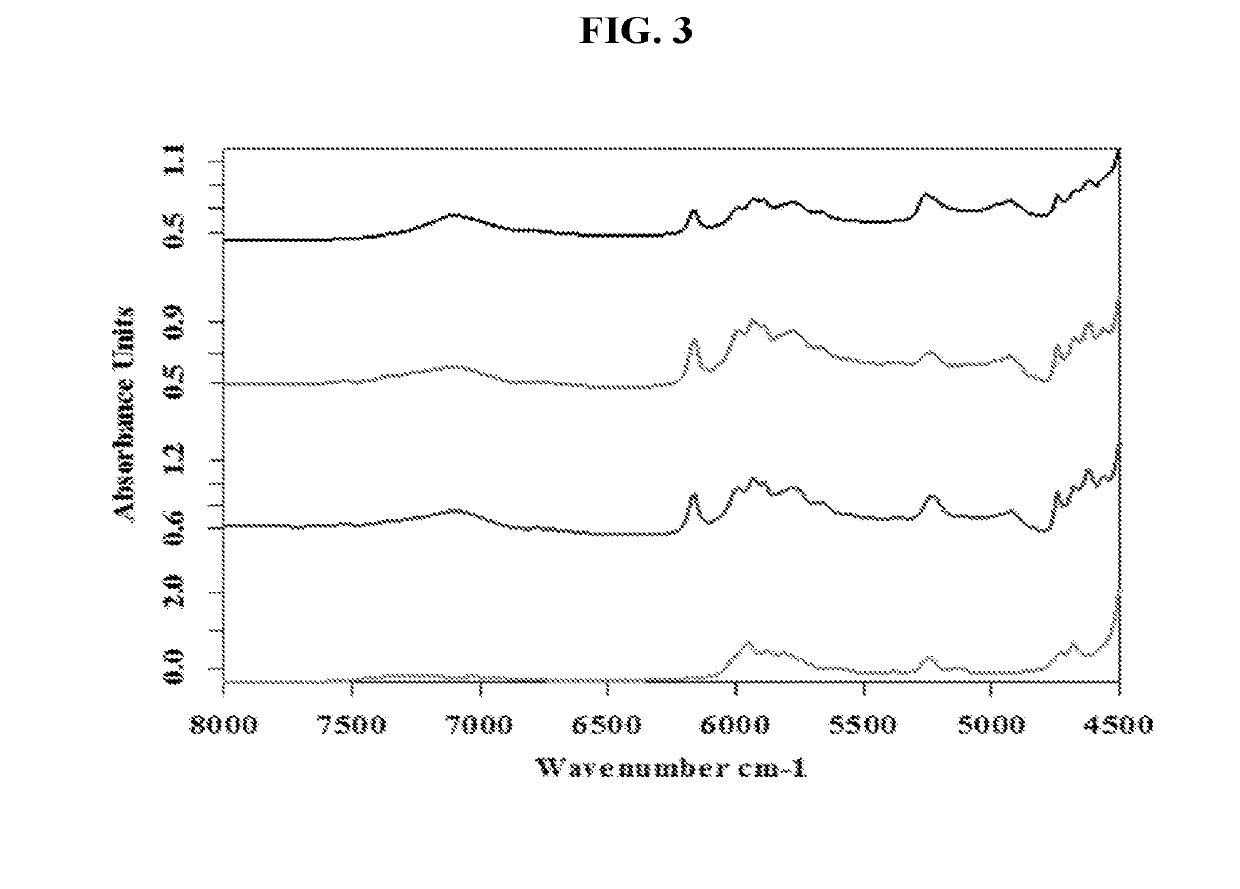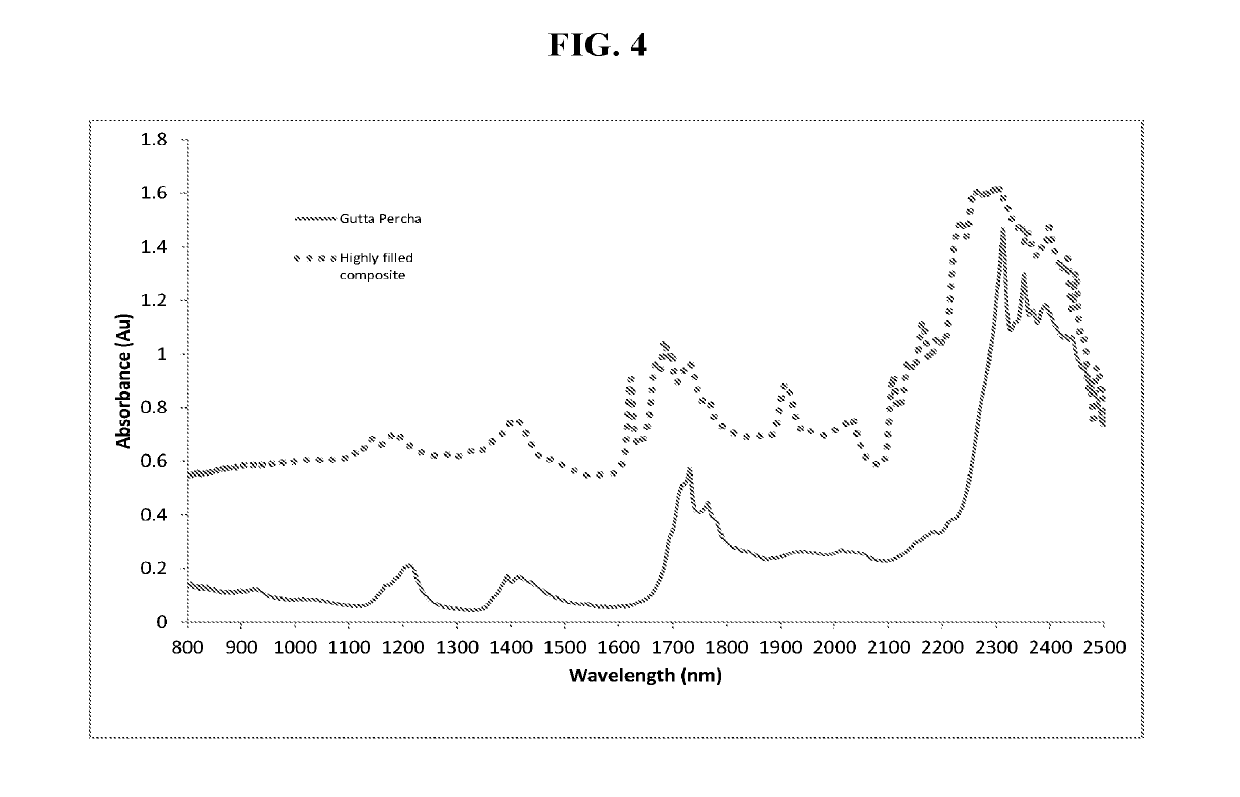Heating of dental materials using overtone signatures, absorbing dyes and material properties
- Summary
- Abstract
- Description
- Claims
- Application Information
AI Technical Summary
Benefits of technology
Problems solved by technology
Method used
Image
Examples
example 1
Application of Photon Energy to Anesthetic, Gutta-Percha, Dental Composite and Dental / Endodontic Irrigants—Absorbance and Performance
[0133]The benefits of the disclosed embodiments can be derived from the application of photon energy of dental materials including, but not limited to: anesthetic (reducing pain during injection), gutta-Percha (for endodontic root canal obturation), dental composites, sealants, cements, cavity liners, and glass ionomer resins (e.g., lowering viscosity, improving handling characteristics, decreasing voids, and improving mechanical properties post-cure) and endodontic irrigants (increasing efficacy and reactivity). For example, in FIG. 3, the absorbance of three composite materials, i.e., Filtek Supreme Ultra, Spectrum TPH3 and Esthet.X HA, is compared with that of acrylic, and illustrates that 3 leading composite brands show similar absorptions to acrylic material. This indicates that the primary composition of dental composite is the acrylic monomer, a...
example 2
Determination of Dental Material Viscosity at Elevated Temperature
[0136]One additional consideration is the desired target temperature for heating the composite material and / or dental material, as this determines the types and amount of photon energy required to achieve the desired handling and / or performance characteristics. Additionally, for photopolymerizable dental materials, the photon energy must not be in excess, which may prematurely cure the photopolymerizable dental material prior to application. In one exemplary embodiment, the composite can be heated to a temperature between about 50° C. and about 100° C., and more preferably 60° C. and about 80° C.
[0137]To determine this with more specificity the following evaluation (FIG. 8) was undertaken:
Methods:
[0138]The rheological characterization of the four preheated resin based nanocomposite [Herculite Ultra (Kerr, Orange, Calif.), Tetric EvoCeram (Ivoclar Vivadent, Schaan, Liechtenstein), Filtek Supreme Ultra (3M, St. Paul, Mi...
example 3
f Temperature on Dental Materials
[0142]It is in some aspects, it is undesirable to heat the composite to a temperature at which the composite material will cure or harden. For example, at temperatures above 140° C. some dental composite will start to harden (either due to self-curing / polymerizing or evaporation of constituents) making it clinically unusable. This temperature will vary depending on the dental composite's composition, and some composites have maintained integrity at 200° C. This experiment is summarized below.
Methods:
[0143]Dental composite from three manufacturers and Gutta Percha from one manufacturer (3 samples of each) were placed on a hot plate and brought up to 60° C. Temperature was monitored with a thermocouple placed in the composite. Temperature was raised by 5° C. every 3 minutes up until 150° C. After 150° C., temperature was raised by 10° C. every 3 minutes. A metal spatula was used to probe the samples and observations were recorded.
[0144]Results:
[0145]At...
PUM
| Property | Measurement | Unit |
|---|---|---|
| Temperature | aaaaa | aaaaa |
| Length | aaaaa | aaaaa |
| Power | aaaaa | aaaaa |
Abstract
Description
Claims
Application Information
 Login to View More
Login to View More - R&D
- Intellectual Property
- Life Sciences
- Materials
- Tech Scout
- Unparalleled Data Quality
- Higher Quality Content
- 60% Fewer Hallucinations
Browse by: Latest US Patents, China's latest patents, Technical Efficacy Thesaurus, Application Domain, Technology Topic, Popular Technical Reports.
© 2025 PatSnap. All rights reserved.Legal|Privacy policy|Modern Slavery Act Transparency Statement|Sitemap|About US| Contact US: help@patsnap.com



